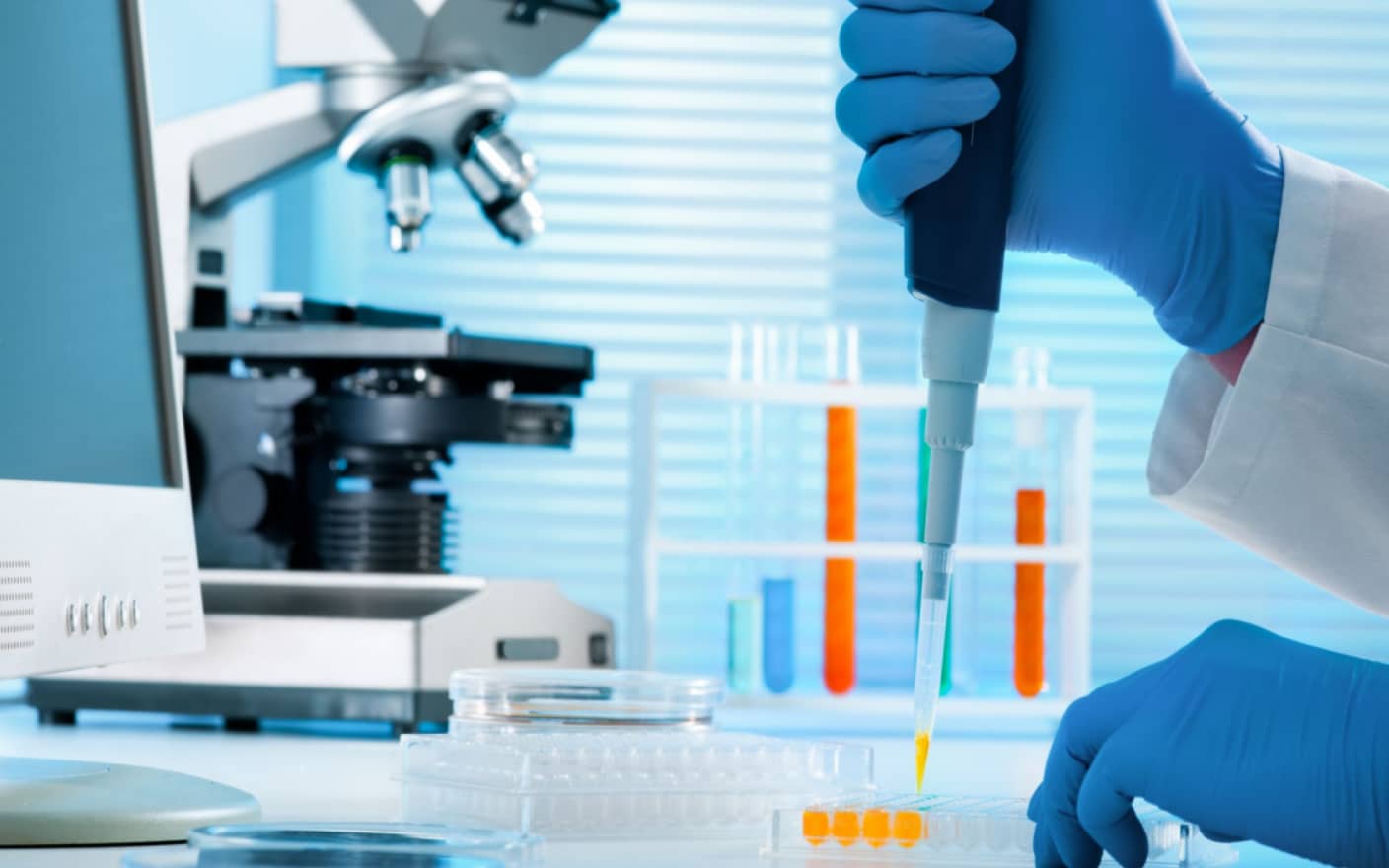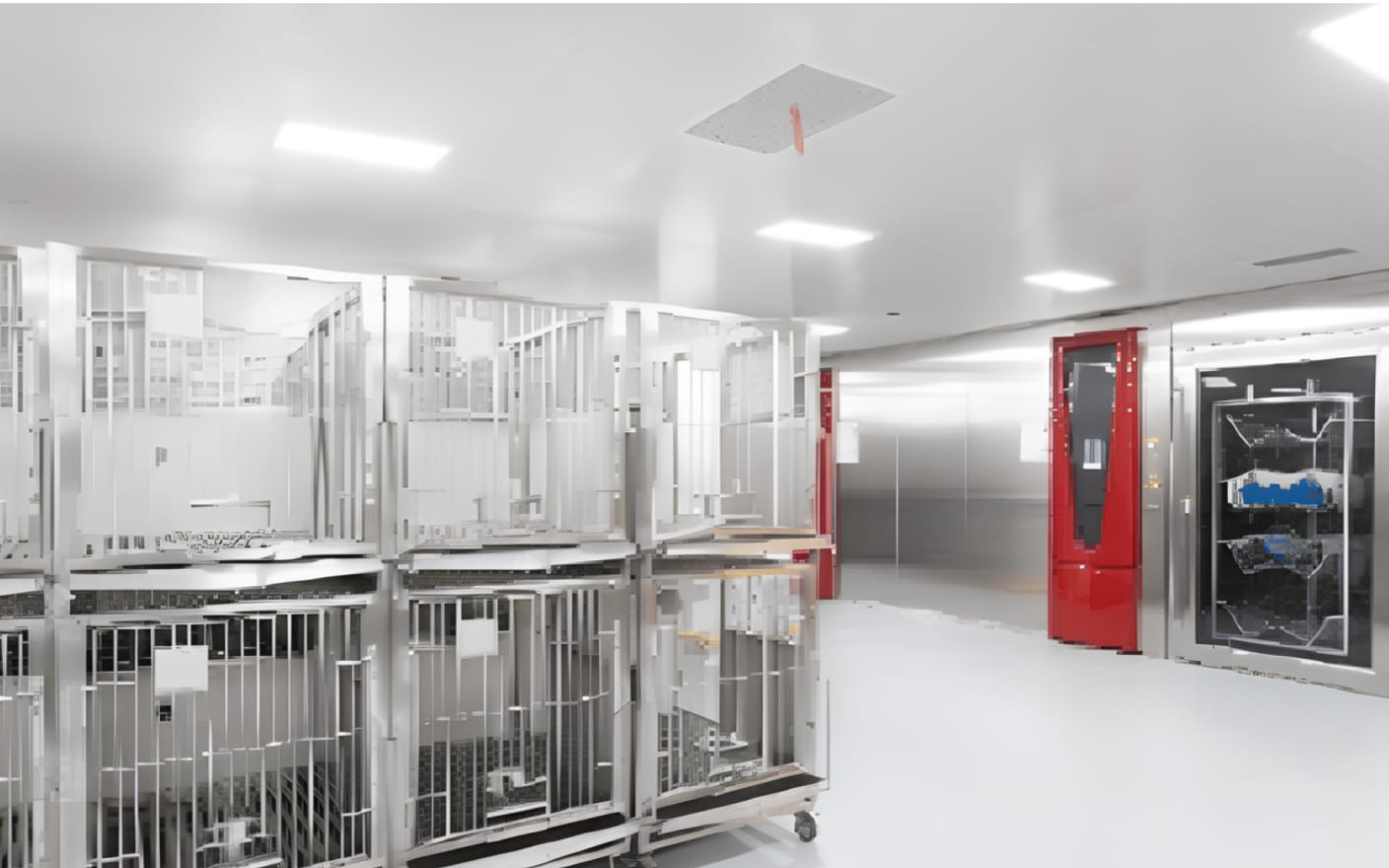The quantitative analysis of oligonucleotides in biological samples and metabolite identification is crucial for pharmacokinetic (PK), pharmacodynamic (PD), and toxicological safety evaluations during the drug development phase. This analysis not only provides important information on the PK, toxicokinetics, and metabolic pathways of oligonucleotides but also could guide the structural modification and delivery system optimization to improve drug stability and delivery efficiency.
Compared with traditional small molecule drugs, oligonucleotides rapidly distribute in vivo after dosing followed by entering the elimination phase. During this phase, they maintain low blood drug concentrations, while exhibiting high exposure due to the accumulation in tissues such as the liver and kidney. As a result, the requirements for quantitative analytical methods for oligonucleotides in biological samples require high sensitivity in plasma/serum, and the detection range should be consistent with high exposure levels in tissues.
Advantages of LC-MS/MS technology
Currently, quantitative analysis methods for oligonucleotide include hybridization-based ligand binding assays (LBA) liquid chromatography with fluorescence detection (LC-FL), LC-ultraviolet (UV), and LC-tandem mass spectrometry (MS/MS). The development of LBA and LC-FL involves the design and synthesis of probes complementary to the target oligonucleotide, resulting in longer development cycles and higher costs. Therefore, it becomes a bottleneck in nucleic acid drug development, especially in early drug screening. Hybridization-based enzyme-linked immunosorbent assay (HELISA) has been widely used in PK studies of oligonucleotides based on the significant advantages of high sensitivity and high throughput. However, it cannot distinguish between full-length oligonucleotides and nucleolytic metabolites, leading to the overestimation of prodrug concentrations due to cross-hybridization. LC-UV cannot be used to analyze low-concentration biological samples because of its low detection sensitivity.
LC-MS/MS technology combines high separation capacity liquid chromatography with high sensitivity and selectivity mass spectrometry. In addition to accurately quantifying nucleic acids in biological samples, it can provide information on base composition, sequence structure, and other information for metabolite identification. The MS platform does not require special reagents and probes and the method development cycle is short, which can significantly accelerate the speed of drug development. Therefore, LC-MS/MS show advantages in the quantitative analysis of oligonucleotide biological samples in early in vitro and in vivo drug screening and non-clinical studies, providing more effective, sensitive, rapid, and accurate assay data.
LC-MS/MS for oligonucleotide quantification
The quantitative analysis of oligonucleotide in biological samples using the LC-MS/MS (Figure 1) can be summarized in the following three steps: sample collection (tissue samples require homogenization), sample pretreatment, and sample analysis using LC-MS/MS.

Figure 1. The flow of quantitative analysis using LC-MS/MS
Challenges of LC-MS/MS technology
The quantitative analysis of oligonucleotides using the LC-MS/MS method faces several challenges, primarily due to the strong hydrophilicity of oligonucleotides, low ionization efficiency, and the tendency to generate a large number of metal adduct ions, resulting in poor peak shape, low recovery, and low mass spectrometry response. To improve the sensitivity and reproducibility of the method, the following three methods can be employed:
-
Optimization of sample pretreatment to improve the extraction recovery.
-
Improvement of the multi-charged distribution of oligonucleotides and optimization of mass spectrometry parameters for more abundant precursor ions.
-
Reduction of metal adduct ion formation in the MS analysis.
Development of sample pretreatment methods
When analyzing oligonucleotides in biological samples, the development of sample pretreatment methods is as important as establishing LC-MS/MS conditions. The following points should be considered for sample pretreatment:
(1) The common oligonucleotide extraction methods include liquid-liquid extraction (LLE) or/and solid-phase extraction (SPE). For the LLE method, thorough mixing and complete sample separation from the organic layer is an important step for removing proteins from biological samples. The SPE method requires strict pH control to ensure high extraction recoveries. Oligonucleotides exhibit non-specific binding in polypropylene and glass containers. The use of low-adsorption consumables or alkylating treatment of the containers, along with sample dissolution in a solvent containing triethylamine, can avoid non-specific binding. Nitrogen blow-dry followed by reconstitution is often used to concentrate oligonucleotide before injection. However, complete drying of the sample through evaporation can sometimes affect reconstitution. In such cases, the addition of a solubilizing agent or evaporation of a portion of the sample can be considered.
(2) In method development, it is important to fully consider the impact of chemical modifications and delivery systems of oligonucleotides on their chemical properties and polarity. Therefore, flexibility in optimizing the existing extraction methods is critical.
LC-MS/MS method development
LC-MS/MS method development is mainly concerned with the selection of columns and optimization of mobile phase and MS parameters. Currently, there are several liquid chromatography columns available for oligonucleotide separation, such as Phenomenex Clarity Oligo-RP and Thermo DNAPac™ PA200 RS, which will not be further discussed here. The ion-pairing reagents such as hexafluoroisopropanol (HFIP)/triethylamine (TEA) system can be used to retain highly polar and anionic oligonucleotides and is widely used for oligonucleotide LC-MS/MS analysis. However, TEA can form "pseudo-neutral molecules" with oligonucleotides through ionic bonding, thereby shielding the oligonucleotide charges and suppressing the MS response. Therefore, the retention provided by ion-pairing reagents must be balanced with their ion suppression to maximize the sensitivity of bioanalysis using MS. TEA is a non-volatile base that tends to bind to the MS detector, causing contamination and significantly decreasing MS detection sensitivity. Hydrophilic interaction liquid chromatography (HILIC) has recently been used for oligonucleotide chromatographic separations as an alternative to reverse-phase separation to reduce the impact on MS detection sensitivity.3
Oligonucleotides respond well in negative ion mode electrospray ionization (ESI) source and can easily form multiply charged ions. Furthermore, the multiple reaction monitoring (MRM) optimization steps are similar to those used for small molecules after selecting the ion transition. In addition, high-resolution MS (HRMS), especially the application of full scan, does not require specific optimization of MS parameters for each oligonucleotide, which greatly simplifies this optimization process and shortens the method development time.
Applications of HRMS
In the analysis of oligonucleotides, common MS applications used are triple quadrupole MS or ion trap MS.
-
Triple quadrupole MS, with high ion transmission efficiency, wide dynamic range, and high sensitivity, offers significant advantages in quantitative analysis. It is widely used for oligonucleotides in biological samples, with a sensitivity of 5-10 ng/mL. Oligonucleotides in triple quadrupole MS mainly produce fragment ions of m/z 125 thymine and m/z 95 phosphate through collision-induced dissociation, but they cannot be used for sequence analysis.
-
Ion trap MS can generate diagnostic ions related to the sequence of oligonucleotides. These ions can be used not only for quantification but also for identification of their metabolites.
In recent years, the application of HRMS in full scan mode has attracted great interest in applying quantitative oligonucleotide analysis. It provides quantitative information on target oligonucleotides and information related to impurities and metabolites. The detection sensitivity of Orbitrap high-resolution mass spectrometry (Orbitrap HRMS) is similar to that of triple quadrupole mass spectrometry, with a wide linear range and a mass deviation of less than 3 ppm. It has the high-energy collision dissociation (HDC) fragmentation mode, which provides abundant ion fragmentation for metabolite identification (MetID). As shown in Figure 2, the small interfering RNA (siRNA) level was quantified in rat plasma using Orbitrap HRMS, with a detection sensitivity of up to 10 ng/mL in plasma.

Figure 2. Quantitative analysis of siRNA in rat plasma using Orbitrap HRMS full scan (linear range: 10-2500 ng/mL)
In addition, Quadrupole Time-Of-Flight Mass Spectrometry (QTOF MS) combines quadrupole and time-of-flight mass analyzers and can be used for in vitro metabolism studies and sequence confirmation of oligonucleotides. Metabolite identification of oligonucleotides and corroboration of modification sites require specialized software to provide compositional analysis methods and identify new peaks. BioPharma Finder 4.0 software (Thermo Scientific) and Promass (Novatia, LLC) are the commonly used oligonucleotide sequence confirmation software. With the continuous advancement of mass spectrometry technology, various techniques such as Capillary Electrophoresis Mass Spectrometry (CE-MS), Matrix-Assisted Laser Desorption/Ionization-Time of Flight Mass Spectrometry (MALDI-TOF-MS), and Ion Mobility Mass Spectrometry (IM-MS) have been employed for quantitative analysis of oligonucleotide in biological samples.
The team has developed mass spectrometry quantitative methods for antisense oligonucleotides (ASOs) and siRNA in over 20 biological tissues and fluids, including the brain, liver, and kidney. These methods have been used to analyze biological samples in vivo and in vitro in several species and meet investigational new drug (IND) application requirements. The lower limit of quantification (LLOQ) of oligonucleotides in biological matrices is 1–10 ng/mL. The MS platforms for quantitative oligonucleotide analysis are shown in Figure 3.

Figure 3. Mass spectrometry (MS) platform for quantitative oligonucleotide analysis
Process for Establishing LC-MS/MS Bioanalytical Methods for Oligonucleotides
Based on our experience, we have summarized the process of establishing a bioanalytical method for oligonucleotides in the following five steps:
Optimization of MS conditions
a) Confirmation of the charge distribution of test articles.
b) Optimization of the mobile phase to minimize metal adduct ions.
c) Optimization of MRM conditions and the use of multiple MRMs to improve the sensitivity.
Optimization of chromatographic conditions
a) The use of different mobile phases and columns.
b) Further optimization of chromatographic conditions, adjusting the gradient and column temperature to separate the analyte and interferences.
Optimization of sample storage conditions
a) Use of appropriate containers and solvents to avoid non-specific binding.
b) Confirmation of sample storage stability (temperature).
Optimization of sample extraction conditions
a) Extraction recovery optimization.
b) Evaluation of the stability of the blow-drying and reconstitution processes.
Method qualification
a) Further optimization of methods to meet the sensitivity requirement.
b) Assessment of the selectivity, reproducibility, and matrix effects of the method.
c) Confirmation of the samples’ stability during processing.
Conclusion
As a new class of drug molecules, oligonucleotides with highly polar and charged require chemical modifications and drug delivery systems to improve their druggability. They have different clinical PK properties from those of small molecules and monoclonal antibodies, posing new challenges for early clinical development.
The PK characteristics of oligonucleotides are closely related to their physicochemical properties, chemical modifications, drug delivery systems, and conjugate properties. Additionally, suitable bioanalytical methods are essential for studying oligonucleotide PK and toxicokinetics. LC-MS/MS provides accurate, rapid, and reliable results for oligonucleotides bioanalysis. HRMS provides up to 500,000 full widths at half maximum (FWHM) resolution, high sensitivity, fast scan speed, and greater dynamic range. Furthermore, this process allows the quantitative analysis of oligonucleotides, sequence identification, and metabolite analysis using the same mass spectrometer.
Click here to learn more about the strategies for oligonucleotides, or talk to a WuXi AppTec expert today to get the support you need to achieve your drug development goals.
Author: Nan Zhao
Committed to accelerating drug discovery and development, we offer a full range of discovery screening, preclinical development, clinical drug metabolism, and pharmacokinetic (DMPK) platforms and services. With research facilities in the United States (New Jersey) and China (Shanghai, Suzhou, Nanjing, and Nantong), 1,000+ scientists, and over fifteen years of experience in Investigational New Drug (IND) application, our DMPK team at WuXi AppTec are serving 1,500+ global clients, and have successfully supported 1,200+ IND applications.
Reference
[1] Richard S. Geary, Daniel Norris, Rosie Yu, C. Frank Bennett, Pharmacokinetics, biodistribution and cell uptake of antisense oligonucleotides, Advanced Drug Delivery Reviews, Volume 87, 2015, 46-51.
[2]http://www.sigmaaldrich.com/technical-documents/articles/biology/custom-dna-oligos-qc-analysis-by-mass-spectrometry.html
[3] MacNeill R, Hutchinson T, Acharya V, Stromeyer R, Ohorodnik S. An oligonucleotide bioanalytical LC-SRM methodology entirely liberated from ion-pairing. Bioanalysis. 2019 Jun;11(12):1157-1169.
Related Services and Platforms




-

 In Vivo PharmacokineticsLearn More
In Vivo PharmacokineticsLearn More -

 Novel Drug Modalities DMPK Enabling PlatformsLearn More
Novel Drug Modalities DMPK Enabling PlatformsLearn More -

 Rodent PK StudyLearn More
Rodent PK StudyLearn More -

 Large Animal (Non-Rodent) PK StudyLearn More
Large Animal (Non-Rodent) PK StudyLearn More -

 Clinicopathological Testing Services for Laboratory AnimalsLearn More
Clinicopathological Testing Services for Laboratory AnimalsLearn More -

 High-Standard Animal Facilities and Animal WelfareLearn More
High-Standard Animal Facilities and Animal WelfareLearn More -

 Preclinical Formulation ScreeningLearn More
Preclinical Formulation ScreeningLearn More
Stay Connected
Keep up with the latest news and insights.











